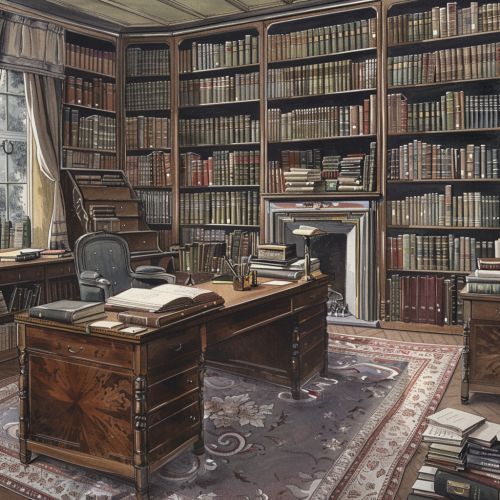Kantian philosophy
Introduction
Kantian philosophy, named after the German philosopher Immanuel Kant, is a cornerstone of modern Western philosophy. Kant's work, particularly his critical philosophy, has had a profound influence on various fields including metaphysics, epistemology, ethics, and aesthetics. His most notable works, such as the "Critique of Pure Reason," "Critique of Practical Reason," and "Critique of Judgment," have shaped the discourse in philosophy and continue to be subjects of extensive study and interpretation.
Historical Context
Immanuel Kant (1724-1804) lived during the Enlightenment, a period characterized by an emphasis on reason, science, and individualism. Kant's philosophy emerged as a response to the rationalist and empiricist traditions that dominated the intellectual landscape of his time. Rationalists like René Descartes and Gottfried Wilhelm Leibniz posited that knowledge is primarily derived from reason, while empiricists such as John Locke and David Hume argued that knowledge comes from sensory experience. Kant sought to reconcile these opposing views by proposing a new framework for understanding human cognition and the nature of reality.
The Critique of Pure Reason
The "Critique of Pure Reason" (1781) is arguably Kant's most significant work. In this text, Kant introduces his revolutionary idea of transcendental idealism, which posits that our knowledge of the world is shaped by the structures of our mind. According to Kant, while we can know the phenomena (the world as it appears to us), the noumena (the world as it is in itself) remains inaccessible.
Transcendental Aesthetic
In the Transcendental Aesthetic, Kant explores the nature of space and time, arguing that they are not external realities but forms of intuition that structure all of our experiences. This means that space and time are a priori conditions for the possibility of experience, not empirical concepts derived from experience.
Transcendental Analytic
The Transcendental Analytic deals with the categories of the understanding, which are fundamental concepts that organize our sensory input into coherent experiences. Kant identifies twelve categories, including causality, substance, and unity, which he argues are necessary for any possible experience.
Transcendental Dialectic
In the Transcendental Dialectic, Kant examines the limitations of human reason. He argues that when reason attempts to go beyond the limits of possible experience and make claims about the noumenal world, it falls into antinomies, or contradictions. This section is crucial for understanding Kant's critique of metaphysics and his argument that certain traditional philosophical problems are insoluble.


The Critique of Practical Reason
The "Critique of Practical Reason" (1788) focuses on Kant's moral philosophy. Here, Kant develops his theory of the categorical imperative, which is a foundational concept in deontological ethics. The categorical imperative is a universal moral law that applies to all rational beings and is independent of any personal desires or inclinations.
The Categorical Imperative
Kant formulates the categorical imperative in several ways, the most famous being: "Act only according to that maxim whereby you can at the same time will that it should become a universal law." This principle requires individuals to act in a manner that their actions could be universally applied without contradiction.
Autonomy and Moral Law
Kant emphasizes the importance of autonomy, the capacity of rational agents to legislate moral laws for themselves. According to Kant, true moral action arises from respect for the moral law, not from external influences or internal desires. This notion of autonomy is central to Kant's ethical theory and has had a lasting impact on subsequent moral philosophy.
The Critique of Judgment
The "Critique of Judgment" (1790) addresses aesthetics and teleology. In this work, Kant explores the nature of beauty and the sublime, as well as the purposiveness of nature.
Aesthetics
Kant distinguishes between the beautiful and the sublime. The beautiful is characterized by harmony and form, while the sublime is associated with vastness and power that can overwhelm the observer. Kant's analysis of aesthetic judgment emphasizes the disinterested pleasure we take in beauty, which is not tied to any practical interest or desire.
Teleology
In the second part of the "Critique of Judgment," Kant discusses teleology, the study of purpose in nature. He argues that while we cannot know the ultimate purposes of nature, we can use teleological principles as a regulative idea to guide our scientific and philosophical investigations.
Influence and Legacy
Kantian philosophy has had a profound impact on a wide range of disciplines. In metaphysics and epistemology, Kant's ideas have influenced subsequent philosophers such as Georg Wilhelm Friedrich Hegel, Arthur Schopenhauer, and the Neo-Kantian movement. In ethics, Kant's deontological framework has been foundational for contemporary moral philosophy, influencing thinkers like John Rawls and Jürgen Habermas.
Criticisms
Despite its influence, Kantian philosophy has faced various criticisms. Some critics argue that Kant's distinction between phenomena and noumena is problematic and leads to a form of agnosticism about the nature of reality. Others have challenged Kant's moral philosophy, questioning the practicality and universality of the categorical imperative.
